Here’s how to empty your pool drain. Read it so you can avoid the dangers and costly mistakes that happen when you don’t follow correct procedures.
Well-maintained pools hardly ever need to be drained. However, no matter how good you’re at maintaining yours, there’s going to invariably come a time when you’ll need to repair it. This could be anything from minor touchups on a vinyl liner to repairing cement cracks. There’s no way you’ll be able to adequately fix these spots without first draining the water.
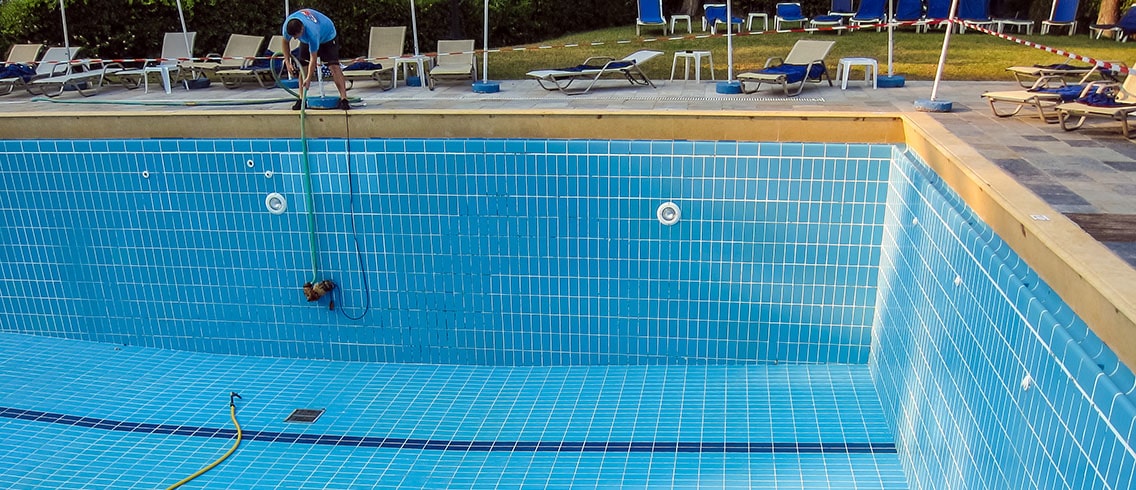
The problem is that refilling a pool can be incredibly costly, so you don’t want to do it a lot. When it’s time to drain your pool, make sure you follow the correct procedures to the letter. Failure to do so could result in severe damage.
Reasons For Draining
Remove Total Dissolved Solids (TDS)
Pool filters can remove suspended particles from your pool, but they can’t remove dissolved materials. These are known as Total Dissolved Solids (TDS). TDS is caused by sweat, sunscreen, debris, and chemicals. All of this can leave a residue that builds up over time. Once TDS gets too high, pool chemicals become ineffective. This results in problems such as:
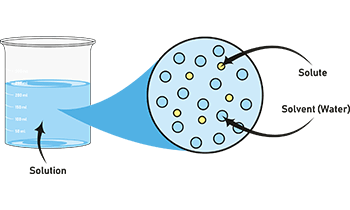
- Cloudiness
- Surface staining
- Scaling
- Hard water
- Algae growth
- Irritated skin and eyes
- Increased bacteria
- Accelerated wear on pool surfaces
Use a digital meter or test strip to check TDS levels. Once they’re approximately 2,500 ppm (parts per million), you should seriously consider draining your pool. That’s because when levels get this high, it can be challenging to keep water quality where it needs to be.
While high TDS levels aren’t unsafe per se, you’ll need to add increasing amounts of chemicals to keep the water balanced. Your pool is also more susceptible to mineral stains at these concentrations. Let it go too long, and the liner material might even start to deteriorate.

Another reason to drain your pool is when cyanuric acid levels are elevated. High levels of this compound severely diminish chlorine’s ability to kill bacteria and viruses. However, you don’t need to completely drain your pool to fix this problem. All that’s required is to partially empty it and add fresh water. This should dilute cyanuric acid to acceptable levels.
Pool Maintenance
Virtually every pool maintenance task can be done with the water still in it. However, some jobs require your pool to be empty. These include things like repairing cracks, repainting the pool bottom, and scrubbing away pervasive metal stains. Let’s say your water source is high in calcium or metals. In that case, you might start to see calcium deposits or unsightly blemishes.
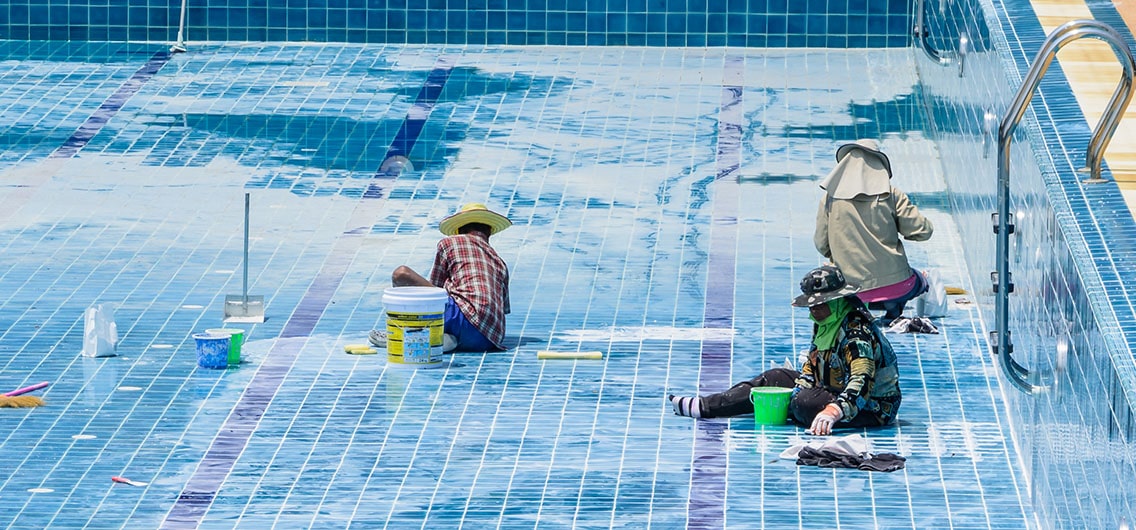
While the stains are merely aesthetically unpleasant, the calcium deposits can damage pool surfaces and equipment. Over time, the weight of thousands of gallons of water can cause a vinyl liner to bubble and tear or a concrete pool to develop cracks.
The sun’s relentless rays are going to fade painted pool surfaces. That’s why you need to paint them every few years to keep them looking their best. You can also take advantage of having an empty pool to get some additional maintenance done. For example, acid washing the walls and floor.
Pool Popups
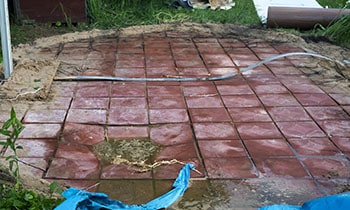
Pool popups are when a pool’s empty bottom gets pushed out of the ground because there’s no water weight to press down on it. Hydrostatic pressure, or the pressure of underground water, causes it to happen. A popup might only be a few inches, or it can be several feet.
When a pool popup occurs, underground pipes can crack or separate. The pool shell itself might even break. The coping around the pool’s top edge can buckle or come loose, and concrete decks can get damaged. Electrical wiring becomes frayed or severed, which creates an electrocution risk.
It goes without saying that pool popups are expensive to fix, and homeowner’s insurance usually doesn’t cover it.
What Creates Popups?
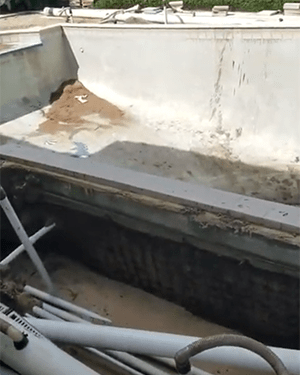
Draining the water directly to your yard can cause the hydrostatic pressure to build up, causing a popup. That’s why you never want to do this. Plus, you don’t want all that chemically treated water ruining your grass and landscaping.
Don’t drain your pool after a heavy downpour. That’s because waterlogged soil can cause an empty in-ground pool to pop up. Give the ground soil plenty of time to dry out after it’s absorbed a lot of precipitation. Remember, just because the ground looks dry on the surface doesn’t mean it’s not still saturated several feet down.
A popup can also happen when there’s significant rainfall while a pool sits empty. The rainwater raises the water table, which creates tremendous hydrostatic pressure. Concrete pools often only require about a 20″ to 40″ differential between the inside water level and the outside water table for a popup to occur.
Let’s say your water table is always high because of an underground spring or another geological peculiarity. In that case, your pool will be susceptible to popups when it’s empty. In this case, it’s advisable to seek the advice of a professional before draining it. You can also do a partial drain which will significantly reduce the risk of a popup.
Additional Things to Consider
See if You Need a Permit
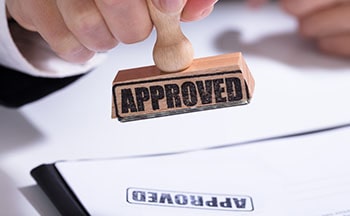
Many cities and towns make you get a permit before draining your pool. That’s because they want to make sure that the water you’re draining doesn’t have high chemical concentrations, which could have detrimental environmental effects. If you’re required to get a permit, you’ll most likely have to disclose water quality testing results such as pH and chlorine levels. You’ll also have to let the permit issuers know what the levels of contaminants (such as algae, dirt) and debris are.
Even if your city doesn’t require you to get a permit, it’s always a good idea to ensure that the water has a neutral pH, is chlorine neutral, and doesn’t have potentially hazardous chemicals. To get to safe levels, stop adding chemicals. Then, keep testing the water until it’s safe enough to drain. If you need to get it done sooner, use a chlorine neutralizer to speed things up.
Make Sure You Can Afford It
If your water is metered, replacing it all after draining it can be expensive. Do it when you have enough money in your budget.
Make Sure it’s Not Too Hot
The hot sun can do severe damage to your liner, walls, and floor. That’s why you should never let your pool sit empty in heat above 85° F. Spring is the best time to do it.
Fiberglass or Vinyl Considerations
Never completely drain an in-ground vinyl or fiberglass pool because doing so will damage pool surfaces. Vinyl pool liners can start to bow or crack. The best thing to do for these types of pools is to partially drain them.
Where Do I Drain the Water?
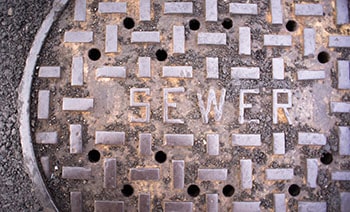
Usually, you’ll drain the water into your residence’s main drain. One thing you need to look out for is clogs. Over time, your home’s sewer line could build up with residues such as paper, grease, and other problematic waste.
Unfortunately, you might not even realize there’s a problem until you try to empty thousands of gallons of water into the main drain. To prevent water from flowing back to the pool area if the main drain gets clogged, direct the outflow downhill.
Some cities let you empty the water into street drains. Contact city hall to find out what the laws are in your locality.
Hydrostatic Pressure Valves
The hydrostatic pressure relief valves on your pool are crucial to stopping a popup from happening. The valves open when there’s hydrostatic pressure buildup. This allows groundwater to flow into the bottom of the pool, which relieves the pressure. When this happens, you’ll notice dirty water at your pool’s bottom. This is proof that the valves are working.
Draining Your Pool
1. Turn Off Automatic Timers
If your pool equipment runs on automatic timers, turn them off before draining, so nothing turns on during the process. Because your pool lights and dedicated filter pump are water-cooled devices, they’re meant to work underwater. If they’re not submerged in water, they can overheat and break down.
2. Turn On the Submersible Pump
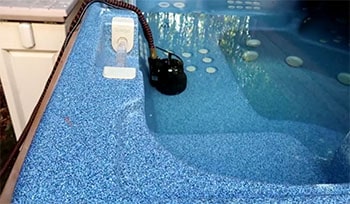
Rent a submersible pump that can handle the volume of water you’re draining. Try to get a pump with a capacity of at least 60 gallons per minute. Make sure the hose is long enough to reach the water’s final discharge point. The power cord needs to be long enough to get from your pool’s bottom to the electrical outlet without using an extension cord.
Don’t use your pool pump because that will pull air into the suction line. This will cause the pump to lose its prime, and you’ll end up burning out the motor. Screw the discharge hose onto the pump and unravel it to its entire length.
Two-inch submersible pumps can remove debris up to ½ inches in diameter. With the pool skimmer, remove as much debris as possible above that limit.
With the pump unplugged, submerge it into the swimming pool at the pool’s deepest point. Don’t drop the pump to the bottom of the pool. Instead, gently lower the pump with a rope looped through the pump’s handle. Plug the pump into a ground-fault interrupter (GFI) outlet.
3. Pump Out the Water
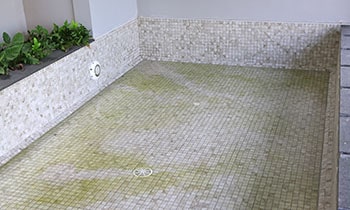
Turn the pump on to start draining. Closely monitor the process to ensure water keeps flowing through because running a dry pump might cause irreparable damage.
Turn the pump off when the water is low enough that the pump isn’t pushing any more water from the pool. You don’t need to drain all your water—just most of it. When the water is too low for the submersible pump, turn it off. Then, remove it. Use a shop vac to suck up the rest of the water.
Make sure the hydrostatic pressure relief valves open so they can prevent a popup.
4. Do Your Work
If you have work you’re planning to do—whether it’s painting, repairing your pool, or something else altogether—now’s the time to do it. Just make sure the pool is completely dry before starting. If you’ve drained the pool to remedy the chemical imbalance, proceed to the next step.
5. Refill Your Pool
The usual time to completely refill a pool is 14 to16 hours with two garden hoses. After refilling, turn your pool pump back on and add chemicals.
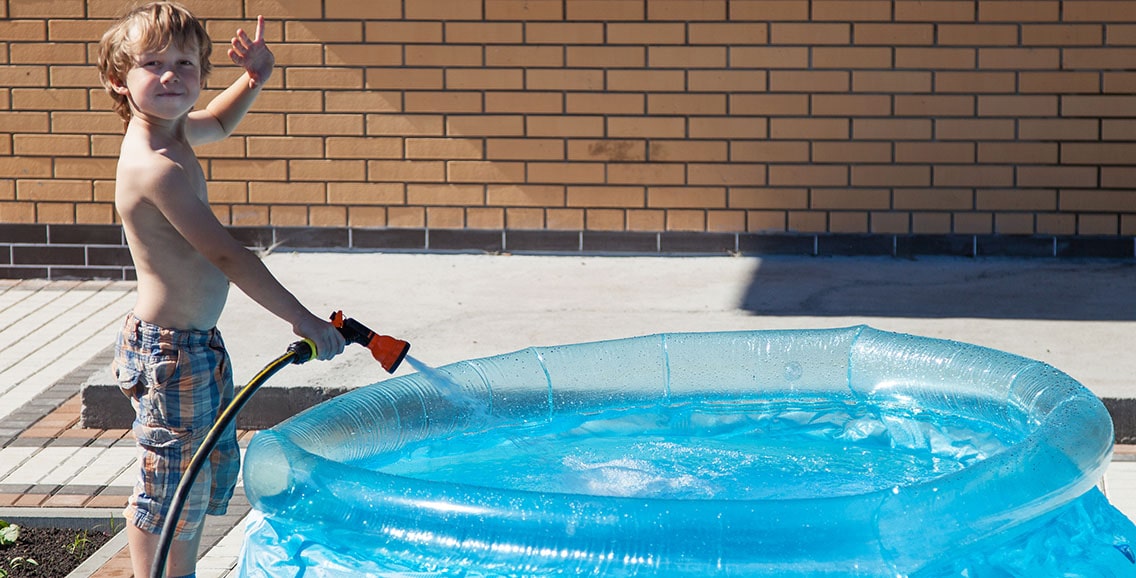
How To Raise pH in Pool
When your pool’s pH level is low, the water gets acidic. This can cause long-term problems such as corrosion of pipe connections, and damage to pump seals. Also, low pH pools lose their chlorine faster.
One easy way to boost your pool’s pH level is by adding soda ash or baking soda.
Final Thoughts
Draining a pool isn’t something you’ll want to do every day. However, there are times when it’s got to be done. When it does, follow the steps in this article so you can complete the process without a hitch.
That way, you can get your repair or deep cleaning done. If you’re looking for easier ways to do ordinary pool cleaning, check out the automatic skimmers on this page.

Pool Maintenance Tips & Tricks
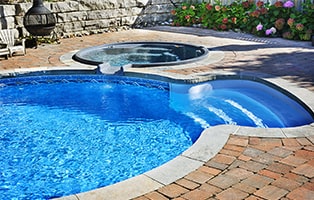

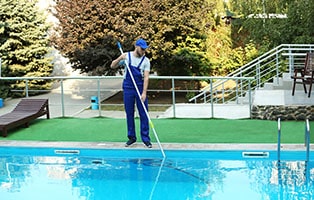
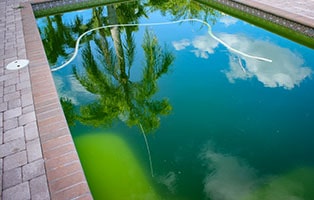
Very nice article. Too informative. After reading, I felt as if I already know and can drain a pool. Still apprehensive though as got no knowledge how a hydrostatic pressure relief valve looks like, where those are located and how to open the valves. Will appreciate very much if these information be written in another article and better still teach me by sending it to my email.